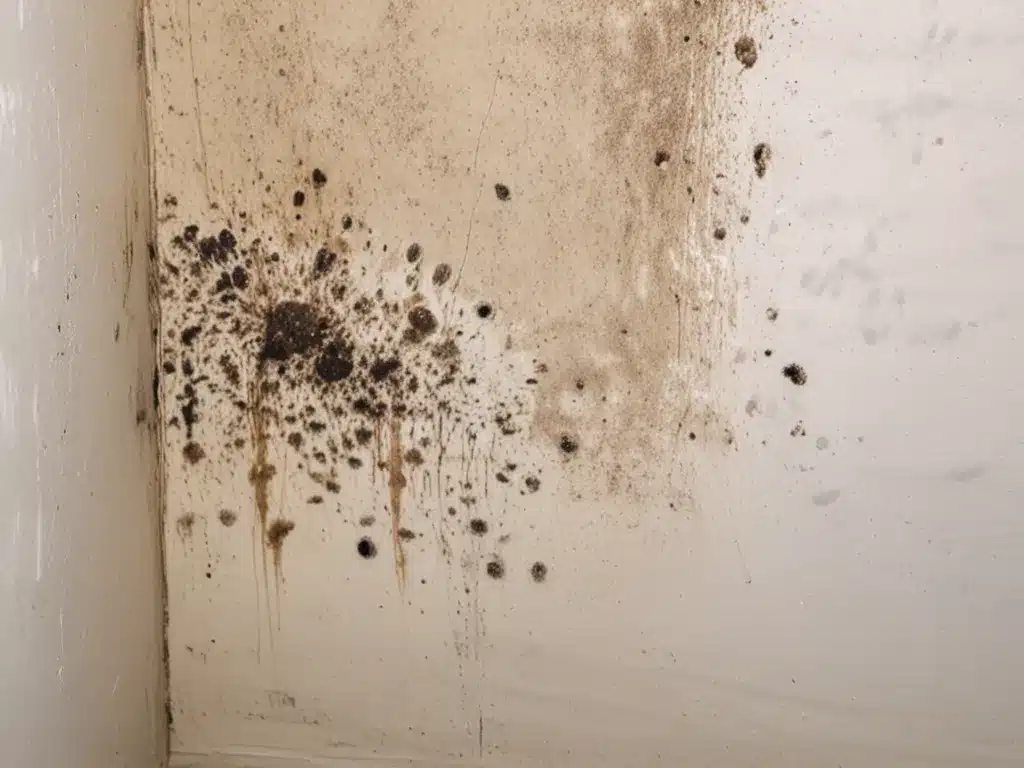Introduction
Mold growth indoors can be a significant problem, as mold spores can trigger allergic reactions and even lead to respiratory issues. However, removing mold spores safely is crucial, as improper removal can actually spread spores further. In this article, I will provide an in-depth look at how to safely remove mold spores from your home.
Identifying Mold Growth
The first step is identifying areas of mold growth in your home. Mold often appears as fuzzy or powdery growths and can range in color from white to black to green. It commonly grows in damp areas like basements, showers, around windows and sinks. Signs of mold include a musty odor, water stains on walls/ceilings, peeling paint or warped floors. I inspect all rooms carefully, looking in hidden areas like under sinks or behind furniture. Once I’ve identified all areas of mold growth, I can move to the next step of safe removal.
Protecting Myself and Containing Spores
Before removing any mold, it is critical that I protect myself from exposure and prevent spores from spreading. Here are the key steps I take:
- Wear protective gear – a N95 respirator mask, gloves, goggles. This prevents me from inhaling spores.
- Seal off the affected room from the rest of the house using plastic sheeting. This contains spores.
- Turn off any HVAC systems bringing air into the room. This prevents circulation of spores.
- Place a box fan facing outwards in a window to ventilate the area to the outdoors. This also minimizes spore spread.
These containment measures are essential to prevent mold spores from infiltrating unaffected areas of my home during removal.
Removing Mold – Dry Removal Methods
For small areas of mold growth on non-porous surfaces like countertops, tiles, or bathtubs, I can often remove mold without using liquids. Dry removal contains spores effectively. Here are the techniques I use:
- Gently remove surface mold using damp rags or paper towels. Rags capture loose spores.
- Vacuum the area thoroughly using a HEPA filter vacuum. This captures remaining spores.
- Clean the area with soap and water to remove any soapy residue.
- Allow all surfaces to dry completely. Mold needs moisture to grow.
By gently cleaning and drying affected non-porous areas, I can effectively remove mold with minimal spore release.
Removing Mold – Wet Removal Methods
For more extensive mold growth on porous surfaces like drywall or wood, complete removal typically requires lightly wetting surfaces. However, wet removal has risks of spore release, so precautions are essential:
- Cover nearby surfaces with plastic sheeting to contain water spray.
- Lightly mist the moldy areas with water using a spray bottle. This prevents heavy runoff.
- Scrub surfaces gently using nylon or brass brushes. Avoid abrasive scrubbing.
- Use a wet/dry vacuum to capture runoff water and spores as I work.
- Dry all areas quickly and thoroughly, using fans and dehumidifiers.
The key is using just enough water to penetrate and remove mold while minimizing drips and spore spread. Thorough drying prevents regrowth.
Disposing of Moldy Materials
Any porous materials like drywall or insulation that remain extensively moldy after cleaning should be bagged and discarded. I take these precautions when disposing:
- Place moldy debris in heavy duty plastic bags and seal tightly. This prevents release.
- Clean any dust/residue from my clothes before exiting work area.
- Dispose of sealed bags in outdoor trash receptacles immediately.
- Avoid tracking mold spores back indoors on my shoes. I remove shoes outdoors.
Proper containment and disposal of remaining moldy materials is vital to prevent re-release of spores into unaffected areas of my home.
Preventing Future Mold Growth
Once I’ve fully removed existing mold, preventing regrowth is essential through these ongoing steps:
- Maintain lower indoor humidity below 50%. I use dehumidifiers if needed.
- Promptly fix any water leaks and humidity sources like leaks or condensation.
- Improve airflow and circulation through fans, AC, and dehumidifiers. Stagnant air encourages mold.
- Clean any new mold growth immediately before it becomes extensive.
Staying vigilant and keeping moisture in check prevents mold from re-establishing itself in my home.
When to Call a Professional
If mold growth is extensive (more than 10 square feet), or occurs in HVAC systems or in inaccessible wall cavities, I may need to have a professional mold remediation company handle containment and removal. The extensive expertise and equipment professionals have can better handle large infestations and hidden mold.
Conclusion
By identifying all areas of mold growth, containing spores, using protective gear, gently cleaning or discarding moldy materials, drying thoroughly, and controlling moisture, I can successfully and safely remove indoor mold spores. Staying alert and dealing with new growth quickly also keeps mold from recurring. With proper precautions, I can protect my health from hazardous mold spores.







